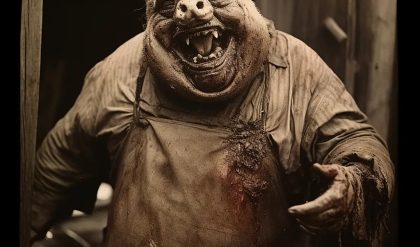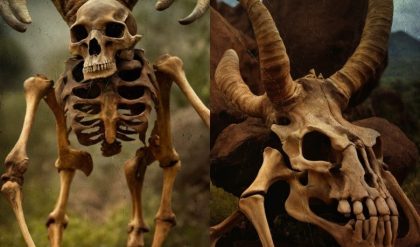The legend of the chupacabra, a mythical creature said to drain the blood of livestock, has long intrigued and terrified people across the Americas. But recently, a new chapter in this eerie tale has emerged with the discovery of a purported baby chupacabra mummy. This enigmatic find, combined with the intriguing concept of dinosaur babies, has sparked a wave of curiosity and skepticism in both the scientific community and popular culture.

The Baby Chupacabra Mummy: A Modern Myth or a Real Discovery?
In 2017, reports surfaced of a mummy claimed to be a baby chupacabra, allegedly discovered in a remote region of Chile. Described as a small, desiccated creature with unusual features, the mummy quickly captured the imagination of both cryptozoologists and the public. The creature was said to be about two feet long, with a body resembling a small dinosaur, complete with a strange skull and clawed limbs.
Physical Description: The mummy’s appearance includes a reptilian body, large eyes, and a head with distinct, jagged features. Its small size and skeletal structure have led some to believe it could be a new species or an unknown prehistoric creature. The mummy was reportedly found in a cave, nestled among other ancient artifacts, adding to the mystery surrounding its origin.
Historical Context: The chupacabra is a creature of recent folklore, first reported in the 1990s in Puerto Rico. Its alleged sightings and descriptions vary widely, from a spiky, alien-like being to a more dog-like figure. The idea that such a creature could have existed in ancient times and been mummified raises fascinating questions about the intersection of myth and history.
Dinosaur Babies: Uncovering the Truth Behind Ancient Reptilian Infants
The discovery of the baby chupacabra mummy has prompted comparisons to fossilized dinosaur embryos, which offer insights into the early life of these ancient creatures. Paleontologists have uncovered several remarkable dinosaur nests and embryos, providing a glimpse into the development of these prehistoric giants.
Dinosaur Embryos: Fossils of dinosaur embryos have been found in various parts of the world, revealing that some dinosaurs laid eggs and cared for their young. These embryos often show details of the developing skeleton and provide clues about the size, growth, and behavior of juvenile dinosaurs.
Mystery and Misconceptions: While the baby chupacabra mummy is said to resemble a small dinosaur, it’s crucial to differentiate between scientifically documented dinosaur embryos and purported cryptids. Many claims of dinosaur-like creatures in modern times are often based on misidentified fossils, hoaxes, or folklore.
The Controversy: Genuine Artifact or Elaborate Hoax?
As with many extraordinary discoveries, skepticism and debate surround the baby chupacabra mummy. Critics argue that the mummy could be an elaborate hoax or misidentified remains of a known animal.
Scientific Scrutiny: To determine the authenticity of the mummy, scientists would need to conduct thorough analyses, including radiocarbon dating, DNA testing, and comparative studies with known species. As of now, no such tests have been publicly reported, leaving the mummy’s true nature in question.
Cultural Impact: The baby chupacabra mummy has become a viral sensation, sparking discussions about cryptids, ancient myths, and the possibility of unknown prehistoric creatures. Whether genuine or not, it has captured the imagination of those fascinated by the supernatural and the unknown.
Ancient Mysteries and Modern Discoveries: Bridging the Gap
The story of the baby chupacabra mummy and its connection to dinosaur babies illustrates the ongoing fascination with ancient mysteries and mythical creatures. While modern science strives to uncover the truth behind such discoveries, folklore and cultural myths continue to influence our understanding of the past.
Cultural Legends: Many cultures have legends of mysterious creatures and beings, often linked to real animals or misunderstood phenomena. The chupacabra, like other mythical creatures, may be rooted in ancient stories and symbols, reflecting humanity’s desire to explain the unexplainable.
Scientific Exploration: Advances in technology and research methods are continually reshaping our knowledge of the past. Discoveries like the baby chupacabra mummy highlight the importance of rigorous scientific investigation to separate fact from fiction and to better understand our world’s rich and complex history.
Conclusion: The Quest for Truth
The baby chupacabra mummy, whether real or a modern myth, represents a captivating blend of ancient mystery and contemporary intrigue. As scientists and enthusiasts continue to explore the truth behind this enigmatic find, the story serves as a reminder of humanity’s enduring fascination with the unknown. The quest to unravel the secrets of ancient creatures and mythical beings is ongoing, and each discovery brings us one step closer to understanding the rich tapestry of our planet’s history.





